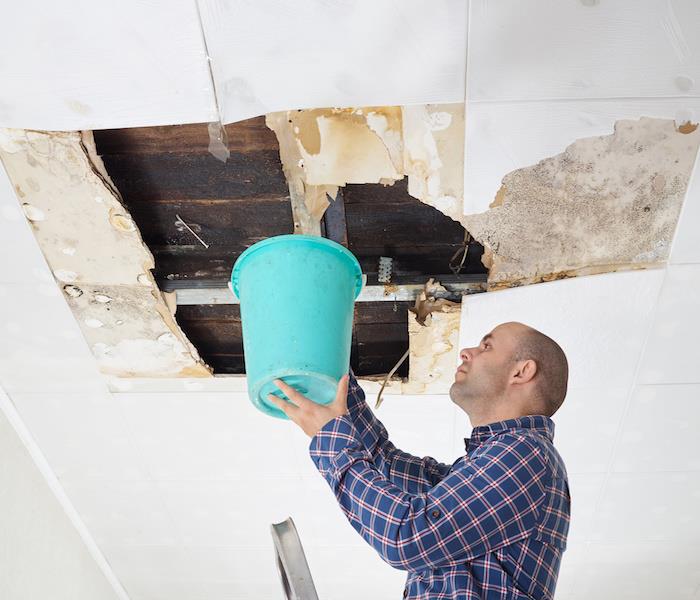Tips to Identify Water Damage Hazards
6/20/2016 (Permalink)
Apart from damaging personal possessions and bringing into question the integrity of a building, water damage has other negative effects such as increased maintenance costs, decrease in the value of a property, lower productivity, and it can be a potential liability with a possible decline in indoor air quality. While the professionals at SERVPRO can restore a building to its original state after water damage, it’s easier and cheaper to protect the building against water damage in the first place.
The best way to protect a building against the potential of water damage is to make sure that the building not susceptible to moisture and that all appliances are operating efficiently. The building’s components that enclose the structure, which are known as the building envelope, should be water-resistant. Additionally, the building’s manufacturing processes shouldn’t allow for excess water to accumulate and all plumbing and ventilation systems should be operating efficiently and should be well-maintained.
The following are tips to help prevent the possibility of water damage to a building.
Identify and Repair Any Leaks or Cracks
Any open areas in a building can be a source of potential water invasion. Even the smallest leak can cause substantial water damage so it’s important that there are no cracks where water may enter the building. While some leaks will be apparent to those inside the building, others will be small enough that only a close inspection will reveal the problem. Some of the common sources of water damage to a building include:
Windows and Doors
Leaks from windows and doors have the potential over time to cause significant water damage. For businesses, storefront system leaks can cause dangerous water damage.
Roof
Any problems with drainage systems or roof sloping has the potential to reduce the life span of a roof and can result in moisture infiltration. Vents for exhaust or plumbing or rooftop air-conditioning units are other common areas where leaks can occur.
Foundation and Walls
If there are any cracks or holes in the building’s walls, joints, or foundations, they need to be sealed to avoid potential water infiltration. This type of problem often occurs when there’s differential settlement which occurs when a building’s piers or foundation settles unequally due to the soil beneath the structure expanding, contracting, or shifting away.
Plumbing
Leaks in plumbing fixtures, dripping pipes, clogged drains, defective water drainage systems, and damaged manufacturing equipment can cause serious water damage no matter if it’s inside or outside of the building.
Ventilation, Heating, and Air Conditioning (HVAC) Systems
HVAC systems are made up of various components that have the ability to contribute to excess moisture which can, in turn, cause water damage. In areas with a humid climate, one of the primary functions of the system is to reduce the ambient air moisture level in the building. If the system isn’t operating properly, it won’t perform this function and will cause an increase in moisture.
Inspection and Maintenance
Many times half the battle of preventing water damage is knowing that there are dangers of it occurring. Certain parts of the building can be regularly checked to ensure that they’re in good working order and aren’t a danger of causing water damage.
Flashings and Sealants
Flashing are found around doors, windows, and roofs and are there to prevent water from coming into spaces where two different types of building materials come together. They are typically thin metal strips around the entrances. Sealants and caulking are usually applied to make sure no moisture is able to enter the building at its joints.
Vents
All vents need to have the appropriate hoods, exhaust to the outside, and be in good working order. If not, they could potentially be a cause of water damage.
HVAC
When checking your HVAC system for potential hazards, look for any leaks in the supply and return water lines, pumps, air handlers, or other components. All drain lines should be clean and clear of any obstructions and the ductwork should be insulated to avoid the existence of condensation on any exterior surfaces.
Humidity
The relative humidity in a building should be somewhere between 30 and 50 percent. If condensation appears on windows, wet stains appear on walls and ceilings, or there’s a musty smell in the building, the relative humidity may be too high.
By being aware of potential causes of water damage, you can prevent serious damage from occurring in your home. A quick inspection and routine maintenance will ensure that there are no hazards in the building that could become serious problems. But if you do suffer from water damage, call SERVPRO immediately to have the problem remedied.






 24/7 Emergency Service
24/7 Emergency Service
